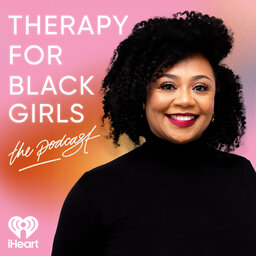Session 345: Black Women & Heart Health
Did you know that February is American Heart Month? We’re celebrating by bringing awareness to cardiovascular health disparities, especially those that impact Black women. Joining us for this conversation is Dr. Jayne Morgan, Cardiologist and the Executive Director of the Covid Task Force at the Piedmont Healthcare Corporation in Atlanta, GA. In addition to being published in the areas of Congenital Heart Disease and Interventional Cardiology, Dr. Morgan currently serves as a Board Member of the National Diversity and Inclusion team at the American Heart Association.
During our conversation, Dr. Morgan explains what it means to have a healthy heart, how race and gender play a part in the healthcare system’s treatment of heart-related issues, and what Black women should be aware of to preserve healthy hearts for a lifetime.
About the Podcast
The Therapy for Black Girls Podcast is a weekly conversation with Dr. Joy Harden Bradford, a licensed Psychologist in Atlanta, Georgia, about all things mental health, personal development, and all the small decisions we can make to become the best possible versions of ourselves.
Resources & Announcements
Visit our Amazon Store for all the books mentioned on the podcast.
Grab your copy of Sisterhood Heals.
Where to Find Dr. Morgan
Stay Connected
Is there a topic you'd like covered on the podcast? Submit it at therapyforblackgirls.com/mailbox.
If you're looking for a therapist in your area, check out the directory at https://www.therapyforblackgirls.com/directory.
Take the info from the podcast to the next level by joining us in the Therapy for Black Girls Sister Circle community.therapyforblackgirls.com
Grab your copy of our guided affirmation and other TBG Merch at therapyforblackgirls.com/shop.
The hashtag for the podcast is #TBGinSession.
Make sure to follow us on social media:
Twitter: @therapy4bgirls
Instagram: @therapyforblackgirls
Facebook: @therapyforblackgirls
Our Production Team
Executive Producers: Dennison Bradford & Maya Cole Howard
Producers: Fredia Lucas & Ellice Ellis
Production Intern: Zariah Taylor
 Therapy for Black Girls
Therapy for Black Girls


